Salmon Fishing, Bear Safaris and Cloud-Hopping in the Alaskan Wilderness
Whether you’re in the lodge, hiking nearby trails, or fishing in the famed Inner Passage, here’s how to make the most of a luxurious Alaskan getaway.
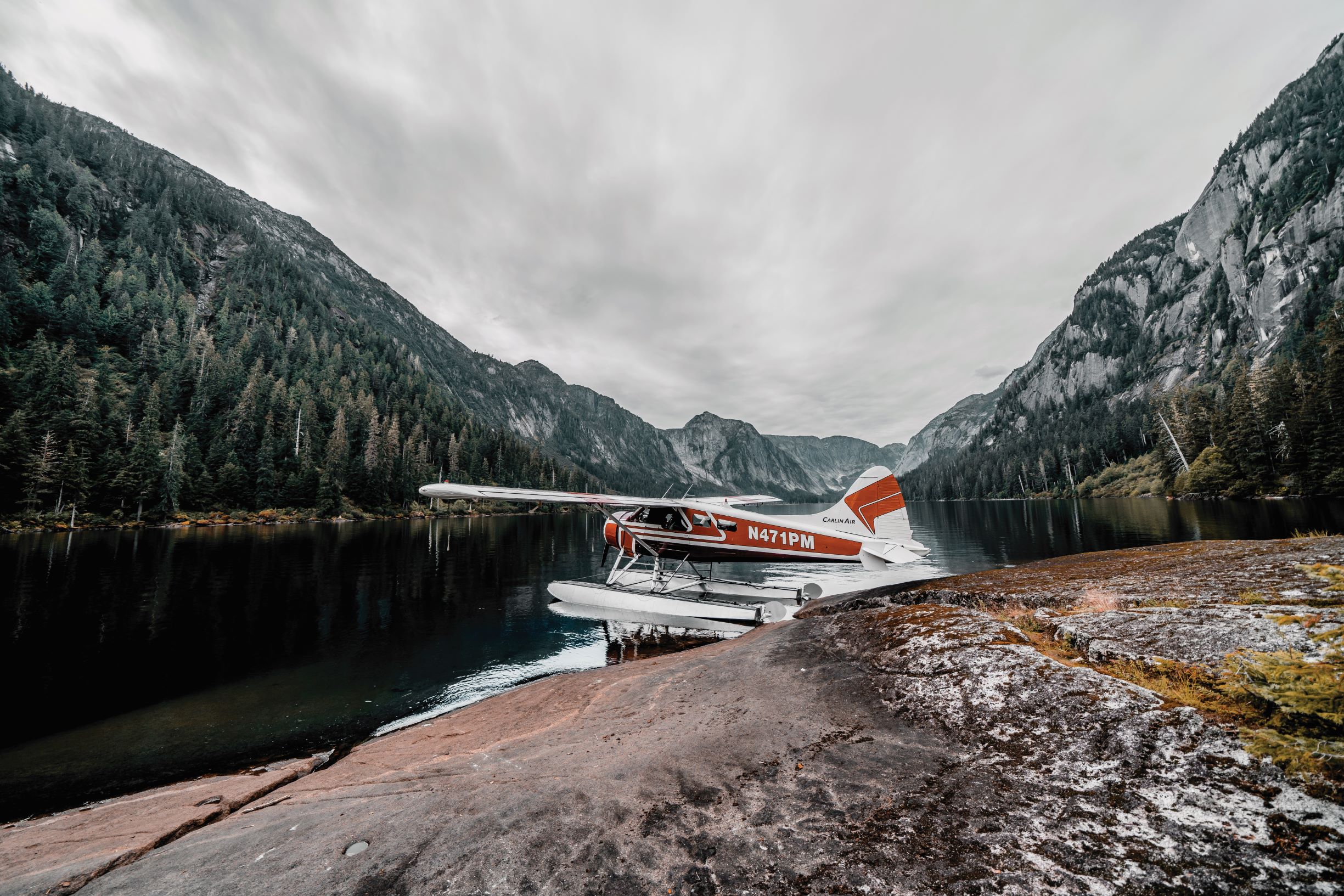
We’re in a de Havilland Beaver bush plane flying high over ancient glacier-carved fjords, the only sound in the six-seater the thrum of a single-engine prop. A hypnotic soundtrack as we skim just over an Alaskan peak, the rocky outcroppings crowned in wisps of stubborn fog. A pond atop the mountain glistens in the morning light of the Misty Fjords National Monument, an area so remote it’s accessible only by boat or floatplane.
https://www.instagram.com/p/CJ7Ql28lCbO
It would take a man weeks to hike up to any of the endless summits that make up the stunning 2.2 million acre park, meaning the green and cool lake below is as pristine and unsullied by human hands as it was during the last ice age. Nothing more than a dark puddle for wandering giants. The further we float north splotches of white snow start peppering tree tops and naked granite. Or are those mountain goats?
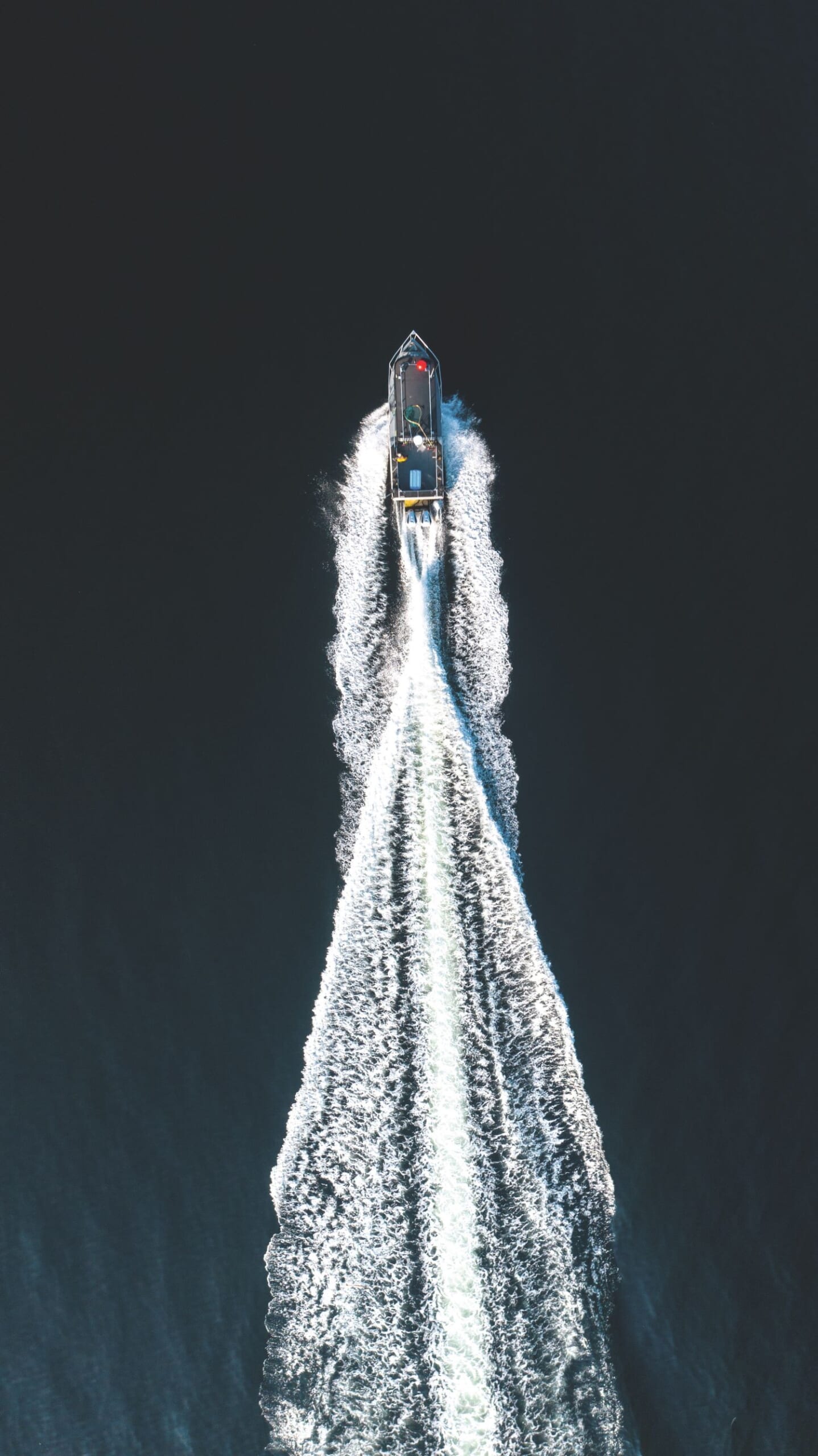
“OK, we’re gonna try to land ahead,” crackles the voice over the headphones, “as long as the fog doesn’t get too bad.” Joe the pilot pushes the de Havilland’s yoke forward and heads straight towards what looks like the top of a mountain, to the source of a waterfall so tall and breath-stealing Bob Ross couldn’t have imagined it, no matter how many happy little clouds he inhaled.
As we zoom just over its crest an expansive lake opens up before us, the perfect landing strip for this pontooned craft. Everyone’s eyes are bugging out of their sockets, hearts skipping as we glide along the water, make contact, relax the engine and slowly come to a skimming stop. “Welcome to Big Goat Lake,” says Joe, smiling to no one in particular. “We’re about 2,000 feet above sea level right now.”
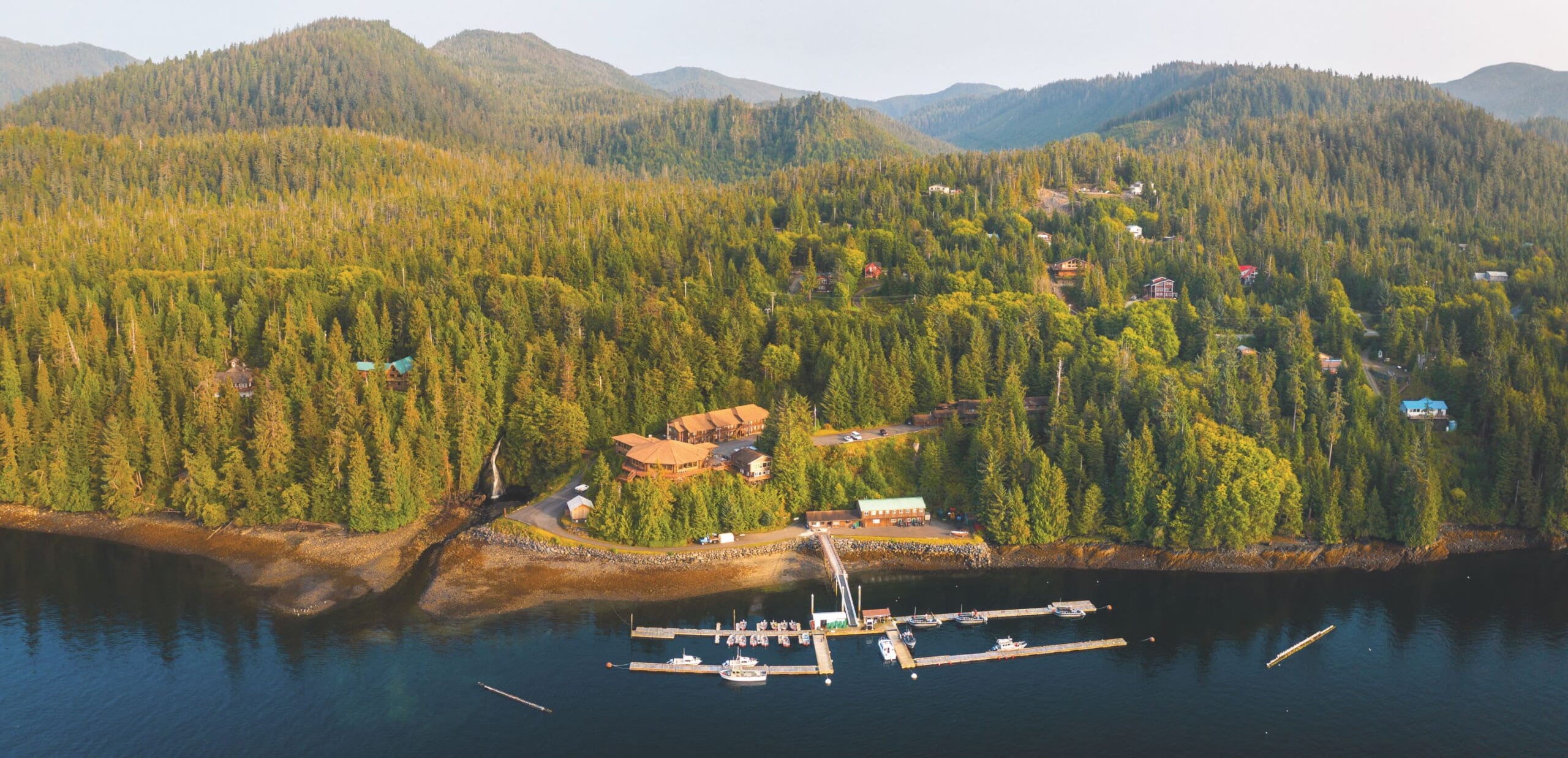
There’s something about these floatplanes that embodies adventure. The fat pontoons, the high-set wings, the rudimentary single prop, the endless sense of exploration beyond the edges of civilization—and nowhere do they seem more organic than here in Alaska, America’s last great frontier. We gingerly disembark from the plane as it brushes against a small island in the middle of the lake, get out and open our lungs. The air smells like dank life. Someone pops a bottle of champagne; we perch on a moss-covered rock, sip and listen to the sounds of silence.
A couple hours later we’ll be sitting in the Timbers restaurant-cum-lodge at the Salmon Falls Resort reminiscing about this moment. While drinking ice cold Denali Brewing Mother Ales and slurping oysters harvested in the frigid waters nearby, we will return wistfully to our bubbling champagne flutes in the wild. But here and now the moment is meditative, like many we will experience over the coming days.
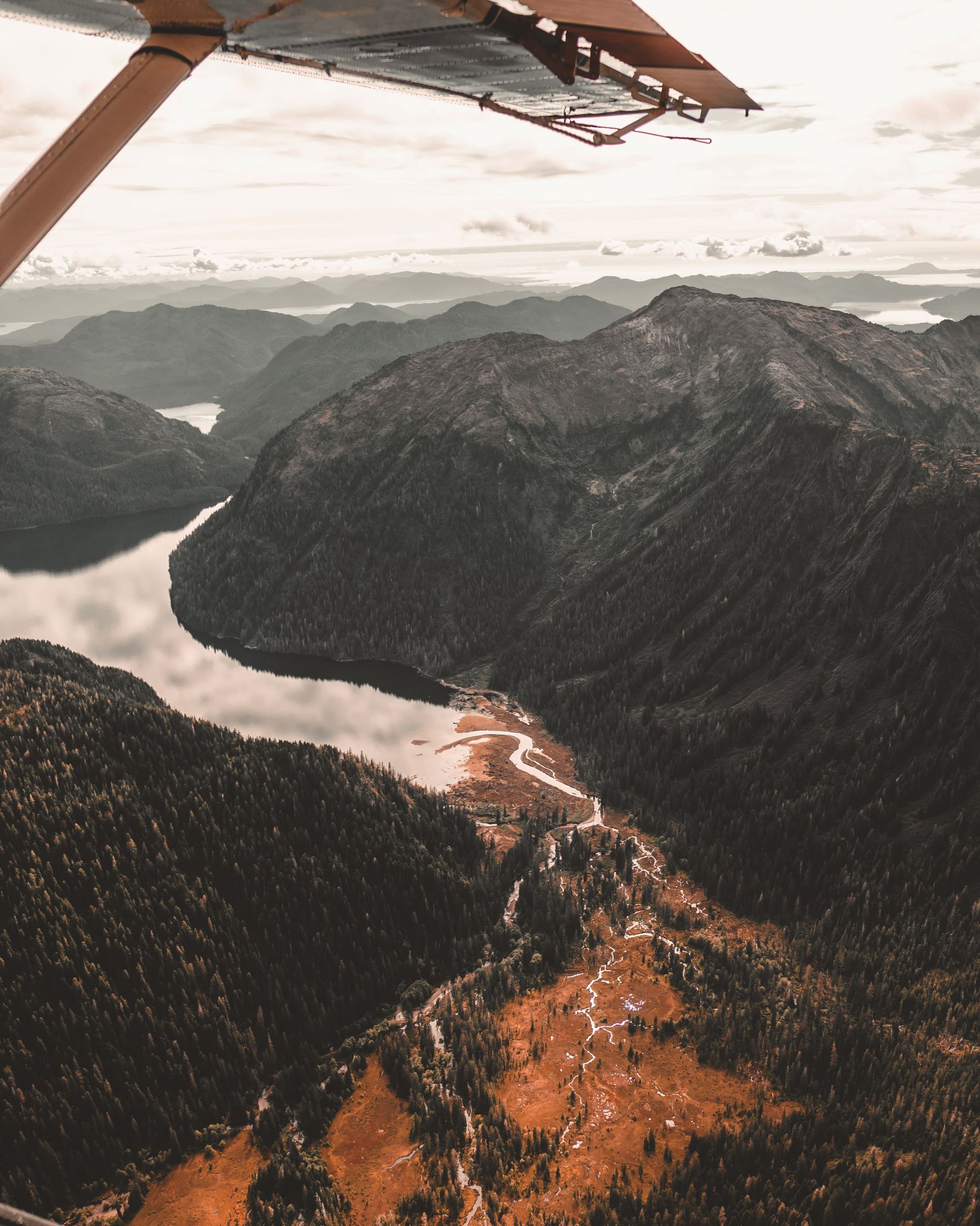
This week marks the end of an extended summer season for Ketchikan, Alaska’s famed “First City.” A weird season for all but especially quiet in these outer regions. Built on the shores of Revillagigedo Island to offer a remote jump-off point for anglers of every stripe, Salmon Falls Resort has taken on an entirely new level of appeal in these times.
Alaska was already inherently imagined for social distancing, ocean fishing even more so. Whether you’re in the lodge, hiking nearby trails, or out in the famed Inner Passage throwing baited lines, natural space is the 49th state’s ultimate luxury. Add the fact that everyone who flies into Alaska has currently to provide a clean COVID-19 test taken at most 72 hours before arrival. In these anxious times, Salmon Falls offers a type of deep peace that is sadly all too rare in our zeitgeist. You don’t have to be on a remote fjord lake a couple thousand feet above sea level or on a fishing boat in the middle of nowhere to feel this peace, but it certainly doesn’t hurt.
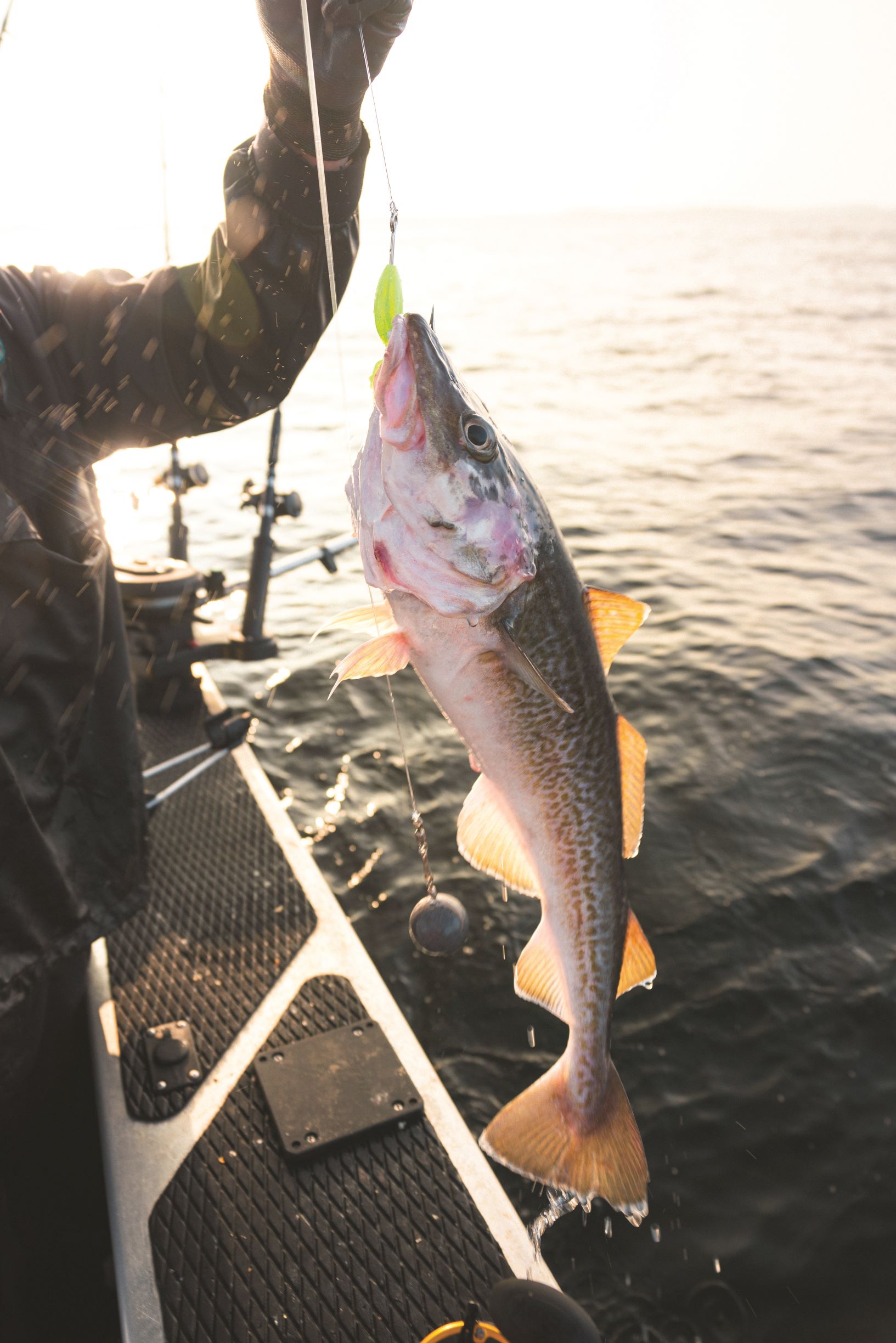
Constructed over three decades ago, the resort itself breathes a classic Pacific Northwest frontier vibe. The Timbers plays hub to the 51- room hotel—its vaulted ceiling, wood structure, and wall of windows looking out to the water all lend the place a decidedly Twin Peaks aura. A length of thick black piping holding up the cathedral roof is an actual piece of the Alaska Pipeline, which the original owner helped build in the ’70s. Bellying up to the bar after a long day out in the water or hiking through the damp forest offers that rare type of closure that only a warm, dry fireplace at the edge of the world can.
The day after our flight the adventure continues, but this time we swap the high-wing de Havilland Beaver for a Riddle Marine ocean fishing boat outfitted with twin 200-hp Honda outboard engines. James Bond’s 19th film The World Is Not Enough featured 007 speeding around the Thames shooting missiles at baddies from a Riddle—the pride of Lewiston, Idaho. But that was a sleek one-seat sprint boat; this 27-footer makes for a much better vessel to conquer the choppy water we hit as we work our way across the Behm Canal towards Vallner Bay, a 300-foot deep canyon famed for its concentration of halibut.
During peak runs the salmon in these parts is legendary—Ketchikan’s title of Salmon Capital of the World is well earned, where Chinook, Pink, Chum and Sockeye are added to the bounty of Coho—but that’s hardly where the possibilities end. Prehistoric rockfish, giant halibut, sea bass and black cod will all be baited and caught this afternoon.
https://www.instagram.com/p/CFqGeAMjCoN
“People think Alaska all looks the same, and it sort of does. But it’s like looking at a fire; it relaxes you,” explains our captain Mike Bunker. “You can stare at a fire forever and never get bored. That’s Alaska.” An amicable ex-Hugo Boss model who now spends half the year leading fishing expeditions here in the Alexander Archipelago, Mike mentions how several groups have already come back three times this season. “This is where you want to be,” he motions from the stern of the boat, arms outstretched. “People have been stuck inside for months, masks on. They come here and… look around.” Dark green islands rise on either side, untouched pine forests sprawling as far as the eye can see. Behind us the grey water stretches free to the horizon.
Even on a rough day that keeps us from open water we catch our limit of halibut and cod. Upon return to the dock we dump our aquatic loot, and expert Salmon Falls workers filet, vacuum seal and freeze all our fish for easy carrying home. I can honestly say I’ve rarely been more popular than arriving at friends’ homes with pounds of fresh, spectacularly juicy halibut ready for taco-ification (or grilled fillets, if that’s more your thing).
https://www.instagram.com/p/CGDfL_LJsve
Of course there’s more to southeast Alaska than just fishing. On what they dub a “bear safari,” we take a boat out to Margaret Creek where our guide warns us these enormous predators are known to roam. After an hour hike we end up at the bubbling brook, and sure enough spot a bear—black as the Alaskan winter midnight—scouring for the last of the coho heading upstream to spawn and die.
On the inlet on the way back we pass twin orcas hunting in shallow water, and a little later a family of mammoth sea lions splashing in amusement—a living menagerie of rare aquatic specimens. Just outside of our room we photograph a bald eagle’s nest; from the expansive windows of the Timbers, the raptor can often be seen scouring his territory atop a towering pine.
On our last day we decide to finally take photos of the resort’s eponymous waterfall, wide and grand like an Ansel Adams photogravure print. A subsequent walk on the dock affords an unexpected surprise: a pod of humpback whales bubble-net feeding—a clever technique wherein these glorious giants circle a school of fish and blow air from their blowholes, surrounding their prey in a corral of bubbles.
They then rise through the water in a reverse bobbing-for-apples routine swallowing gallons of fish, their enormous white bellies breaching the water with a low groan. Splash. One can only watch the creatures spellbound, just another reminder before we return to the smog and concrete and stupid politics of our time, that a place like this still exists—a vast, open-air zoo where the world remains free.
